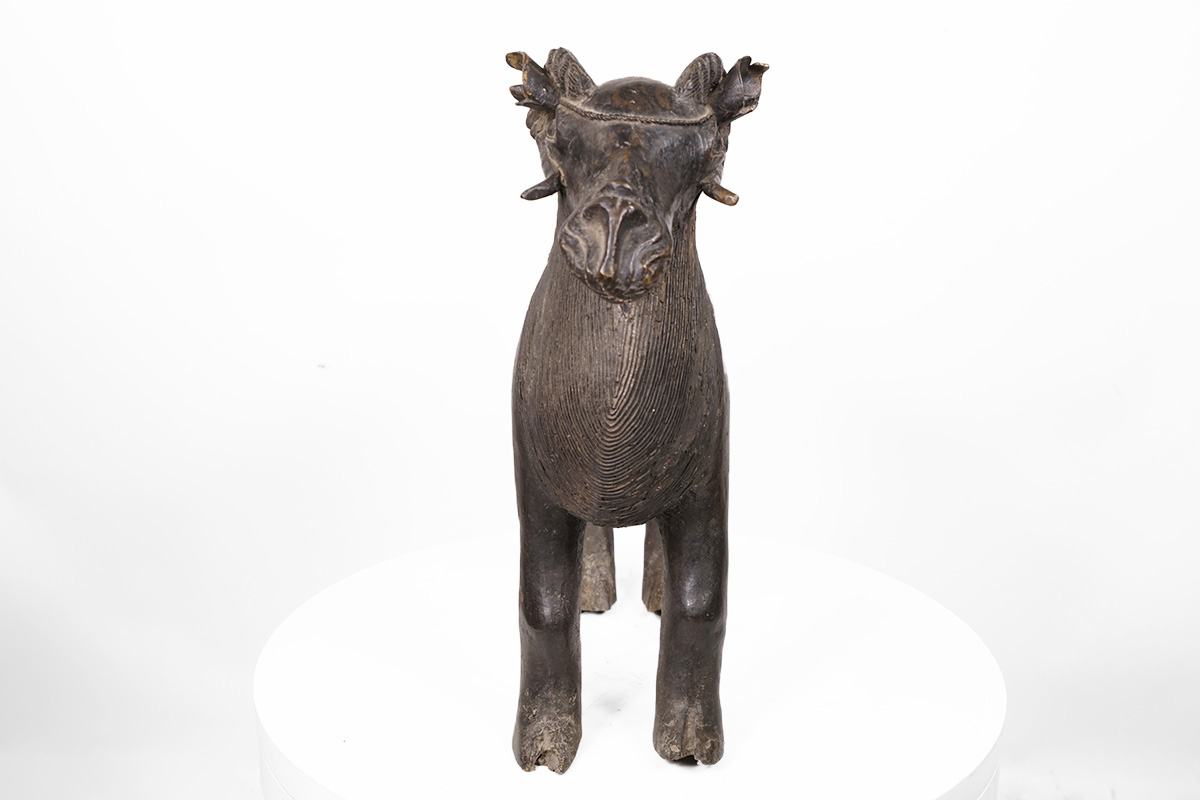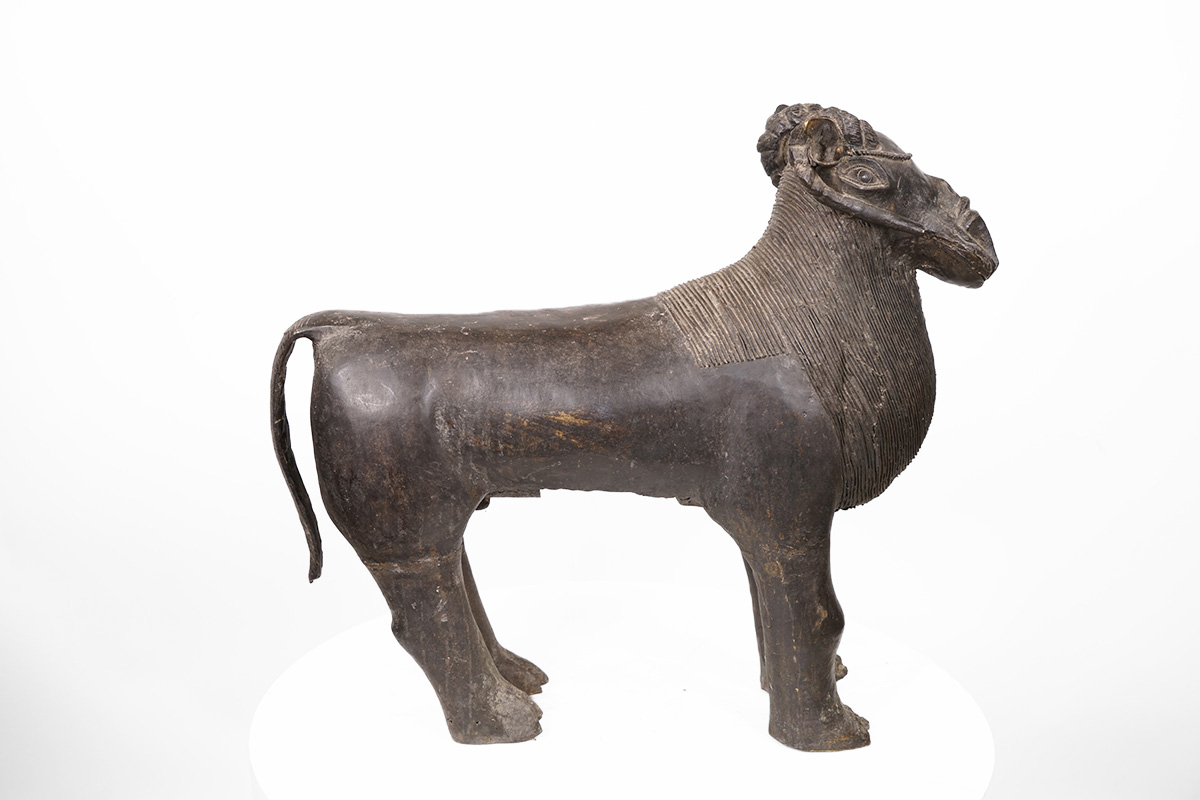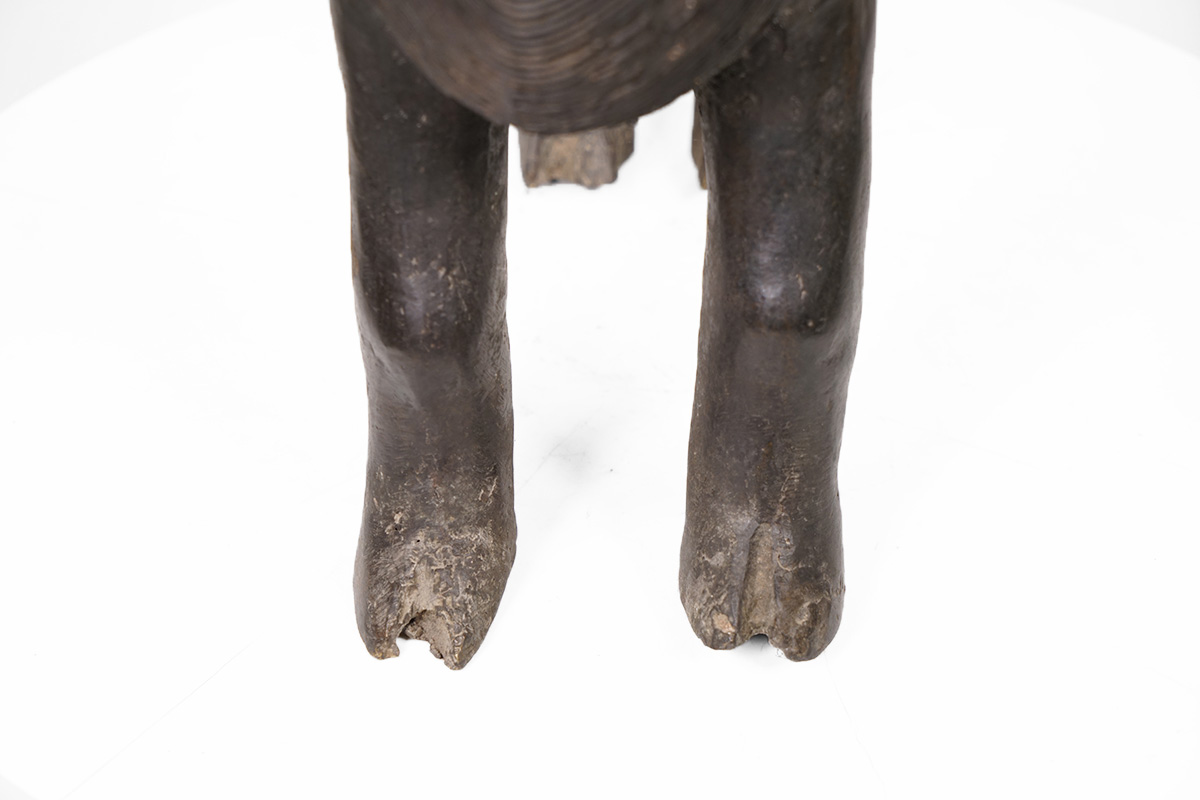This statue was created in the style of the Baule people of Ivory Coast. The statue depicts a standing ram. It measures 19.5 inches tall, 23 inches long and weighs 30.5 pounds. There is some minor damage to the left ear and some corrosion and wear and tear throughout – please inspect photos.
Baule Bronze Ram Statue 23″ Long – Ivory Coast – African Art
$1,100.00
Sold

| Type of Object | Figure, statue |
|---|---|
| Animal | |
| Country of Origin | Ivory Coast (Côte d’Ivoire) |
| Ethnicity | Baule |
| Material | Copper Alloy |
| Approximate Age | Unknown |
| Height | 19.5" |
| Width | 7" |
| Depth | 23" |
| Weight | 30.5lbs |
| Overall Condition | Minor damage to ear. Some corrosion and wear and tear throughout |
You must be logged in to post a review.
Tribe Information
About the Baule People
The Baule are originally part of a breakaway group of the Akan people from Ghana. In the 17th century, Queen Abla Pokou led a group on an exodus away from the main Ashanti Confederacy after a war broke out due to disagreements among the factions. Pokou realized that she and her followers may be in harms way, so she took her people and headed westward. Legend says the group came upon the Comoé River, with its dangerous waters and needed a way to safely cross. With the enemy gaining on them, Queen Pokou asked a diviner for advice. The diviner, after much thought, told her the gods required a sacrifice. Everyone began throwing their most prized possessions into the river; gold, ivory, cattle, everything they owned, hoping to appease the gods. The diviner shook his head and said that our sons are our most prized possessions. Pokou, knowing that her duty as queen was more important than that of a mother, decided then to sacrifice her only son, throwing him into the water and calling out “Ba ouli”, translated to “the child is dead”, giving them the name Baule. After the sacrifice was made, hippopotamuses came up from the river and formed a bridge allowing the queen and her people to cross.
The Baule settled in what is now known as Côte d’Ivoire or Ivory Coast. They began defeating current inhabitants of the area and quickly became the middle man post for North and South trading routes. Towns and villages sprouted up with each being independent from one another, making their own decisions with the primacy of a council of elders. Smaller communities were usually governed by a village-chief whereas large villages were ruled by a king or queen. Considered an egalitarian society, everyone is equal and has a say in the overall agenda of the people, including slaves...
Read more about the Baule here.
Additional Information
About Lost-Wax Casting Method
In-direct lost wax casting is the most basic form of metal casting seen in African cultures. Scholars have yet to establish exactly how it was introduced and developed in West African regions, but it is known that it was being used prior to Portuguese explorers’ arrival in the late 1400’s.
To use this method, the artist must begin with a low melting point material that can retain its shape but is soft enough to carve intricate details into, such as beeswax. Once the artist finishes carving the details, layers of clay are applied to the outside and then left to dry. The first layer of clay applied takes on the details, while the additional layers of coarser clay provide strength to the entirety of the mold. Once fired, the wax is then melted, leaving only the baked clay shell. Liquid metal is then poured into the empty clay mold. Once the metal has hardened and cooled, the clay exterior is then broken. This process reveals the finished metal object, which is always unique due to the mold being destroyed during the final process.
Many West African sculptors have altered this method by using multiple castings, which can be used to create hollowed and thin metal figures. One of the ways to achieve the hollowed result is creating the wax sculptures over a formed clay core. Iron spikes are used to attach the solid clay core to the clay layers of the mold. The metal is then poured inside and left to cool and hardened. At the end of the process, the clay core is then broken up and removed and the final brass work is finished. These hollowed pieces can then be united to create larger figures or vessels.
Source:
Apley, Alice. (2001, October) African Lost-Wax Casting Essay. http://www.metmuseum.org/toah/hd/wax/hd_wax.htm










Reviews
There are no reviews yet.